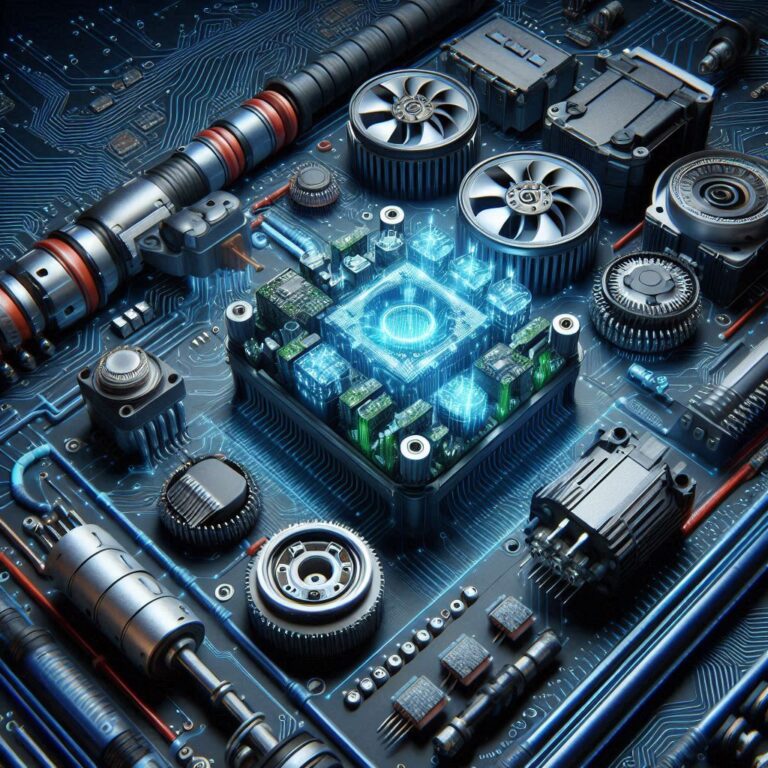Introduction to Differential Electronic Modules
Differential electronic modules are the unsung heroes of modern vehicles, bridging communication between various components and ensuring a smooth driving experience. They play a vital role in managing everything from engine efficiency to transmission performance. However, like any complex system, they can run into issues that might leave drivers scratching their heads or even stranded.
Understanding the common problems associated with differential electronic modules is crucial for both vehicle owners and technicians alike. This knowledge not only helps diagnose issues faster but also aids in implementing effective solutions. Buckle up as we explore these common challenges and equip you with essential troubleshooting techniques to keep your ride running smoothly!
Common Issues Faced with Differential Electronic Modules
Differential electronic modules can encounter a variety of issues that impact their performance. One common problem is signal interference, which may cause erratic readings or malfunctions. This often results from poor wiring or electromagnetic interference in the environment.
Another frequent issue is overheating. If these modules operate under extreme temperatures without adequate cooling, they can fail to deliver accurate data and might even sustain permanent damage.
Software bugs also pose challenges for users. Outdated firmware can lead to compatibility issues or incorrect functionality within the system.
Wiring faults are another cause for concern. Loose connections or damaged wires can disrupt communication between components, leading to inconsistent operations.
Physical damage due to environmental factors like moisture exposure or vibration is not uncommon. These elements can compromise the integrity of differential electronic modules and hinder their reliability over time.
Troubleshooting Techniques for Different Types of Problems
When dealing with a malfunctioning differential electronic module, identifying the specific issue is key. Start by checking for error codes using a diagnostic scanner. These codes can pinpoint where the problem lies.
If the module isn’t responding, inspect all wiring connections. Loose or corroded wires are common culprits that disrupt communication between components.
For performance issues, consider running tests on sensor inputs and outputs to ensure they’re functioning correctly. Sometimes recalibrating your system can resolve inaccuracies caused by environmental factors.
In cases of overheating, assess ventilation around the module and clean any debris obstructing airflow. This simple step can prevent further damage.
Always keep an eye out for software updates from manufacturers as these patches may address known issues in older models or provide enhancements to existing systems.
How to Prevent Potential Issues with Differential Electronic Modules
Preventing issues with differential electronic modules starts with proper installation. Ensure that the module is mounted securely and protected from environmental factors like moisture and dirt.
Regularly inspecting wiring connections can save you headaches later. Loose or corroded wires often lead to malfunctions, so tight and clean connections are essential.
Use quality components during repairs or upgrades. Cheap parts might seem appealing but can introduce more problems over time.
Implement a routine maintenance schedule for your equipment. This proactive approach helps catch small issues before they escalate into major failures.
Educate operators about the importance of monitoring system performance. They should know what normal looks like so they can quickly identify abnormalities.
Keep an eye on software updates related to the module’s functionality. Keeping everything current ensures optimal performance and helps prevent glitches in operation.
Importance of Regular Maintenance and Inspections
Regular maintenance and inspections of differential electronic modules are crucial for optimal performance. These components operate under high stress, making them susceptible to wear and tear over time.
Routine checks can help identify minor issues before they escalate into major problems. Simple adjustments or repairs during these inspections can save significant costs in the long run.
Additionally, regular maintenance ensures that all connections are secure and functioning correctly. This vigilance enhances overall vehicle reliability and safety.
Moreover, staying on top of scheduled servicing helps maintain warranty coverage. Many manufacturers require proof of maintenance to honor warranties fully.
Investing time in routine inspections fosters a deeper understanding of your module’s condition. It empowers you to take proactive steps rather than reactive measures when something goes wrong.
Expert Insights and Tips for Efficient Troubleshooting
When tackling issues with a differential electronic module, expert insights can make all the difference. Start by familiarizing yourself with the specific model you’re working on. Each variant may have unique characteristics and troubleshooting protocols.
Utilize diagnostic tools to pinpoint problems quickly. A multimeter or an oscilloscope can help you measure electrical signals accurately, saving time in identifying faults.
Don’t overlook software diagnostics. Many modern modules come equipped with self-check features that provide error codes when malfunctions occur.
Always document your findings during troubleshooting. This not only helps track recurring issues but also aids in future repairs.
Consult online forums and manufacturer resources for additional support. Engaging with other technicians can lead to discovering solutions that might not be immediately obvious.
Conclusion
Differential electronic modules play a significant role in modern vehicles, ensuring smooth operation and optimal performance. Understanding the common issues that can arise with these modules is essential for any vehicle owner or technician. Whether it’s communication failures, sensor malfunctions, or software glitches, being aware of potential problems allows for timely detection and resolution.
Troubleshooting techniques vary based on the nature of the issue. Utilizing diagnostic tools to read error codes is a valuable first step. Additionally, visually inspecting connections and wiring helps identify any visible signs of damage or wear.
Preventative measures can make all the difference when it comes to avoiding future complications. Regular inspections and maintenance are key factors in prolonging the lifespan of differential electronic modules. Keeping components clean and free from corrosion also contributes significantly to their reliability.
Expert insights highlight that understanding your vehicle’s specific requirements enhances troubleshooting efficiency. Familiarizing yourself with manufacturer guidelines ensures you approach repairs accurately.
Maintaining awareness about differential electronic module performance not only keeps your vehicle running smoothly but also saves time and money on potentially costly repairs down the line. With proper knowledge and proactive measures in place, drivers can navigate their automotive challenges more effectively.
